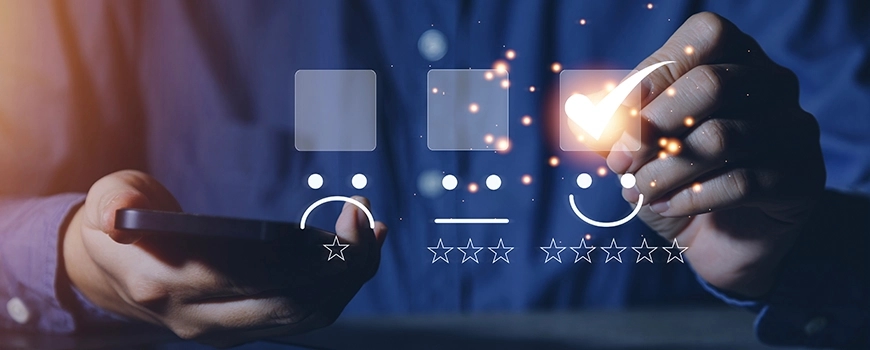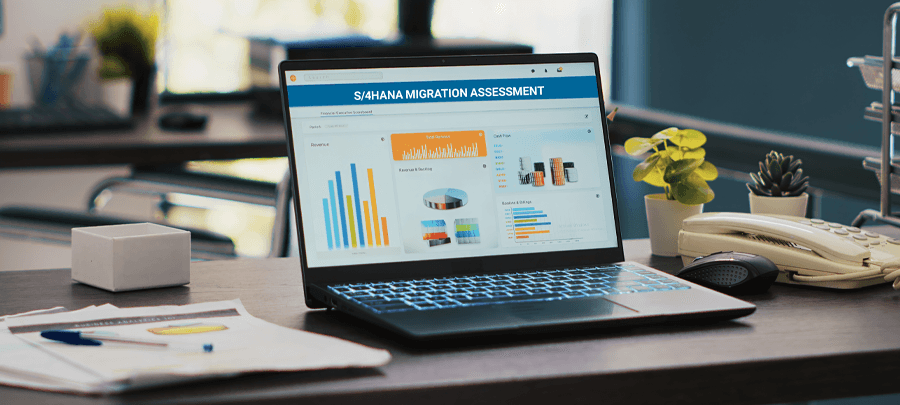How Hyper-personalization Can Drive Customer Engagement, Conversions, and Loyalty
03 May 2023


Richard Pascoe
Vice President - Consulting ServicesRichard Pascoe is the VP- Consulting Services, Applexus Technologies, UK. An experienced leader and business development manager, Richard has been accountable for the success of the...
In the previous blog, we explored the different areas of business where hyper-personalization can play a vital role. Today we will look at the different benefits of hyper-personalization and how implementing a strategic initiative around a personal customer focus can lead to concrete value realization and give you large returns in the long run.
76% of consumers are more likely to consider purchasing from organizations that personalize - Mckinsey[1]
Hyper-personalization is all about NOT taking your customers for granted. An intelligent and personalized campaign can be more impactful, than a generic one that hits a broader customer base - with little to do with a single customer’s preferences. A segmented campaign with targeted messaging is more likely to persuade users and lead to healthy conversions. Even campaigns focused on the correct gender are a step in the right direction.
I am sure everybody has been frustrated by a message addressed to you, the individual, only to end up seeing discounts or promotions that were completely unrelated. A hyper-personalized approach circumvents this problem and makes it more tailored. It shows that the organization tries to understand its customers, before communicating with them and customers appreciate that far more than run-of-the-mill content. The hyper-personalized approach also offers other benefits.
Top 10 benefits of implementing hyper-personalization

Better customer experiences with higher engagement:
The deeper understanding of customers’ preferences and behavior results in the kind of messaging that strikes all the right chords. As a result, customers are more invested in your organization, than when you target them with impersonal messaging, completely irrelevant to their interests or needs.
90% of U.S. consumers find marketing personalization very or somewhat appealing - Statista [2]

Random messages that have very little to do with the recipient’s preferences fail to generate any interest. Such communication will always fall short of its desired goal and could have the opposite effect because organizations aren’t capturing customer sentiments. The moment you place the customer at the center of every campaign, with every little detail modified as per the individual metrics you start to gain more engagement.
Think about your email inbox, how often do you unsubscribe, ignore, or move incoming communication to junk emails, even though you originally signed up for it because they provide no useful benefit?Increased order placements leading to more conversions:
When customers find personalized information in an organization’s communication, they are more likely to interact with it. This then increases the retention time on the website and leads to a higher chance of converting them. On the other hand, customers that receive impersonal communication will likely abandon a company’s touchpoint sooner (website, social channels, etc.) and are less likely to place an order.
Take every customer’s KPIs into consideration, before hitting them with any messages. This allows them a chance to interact with something relevant to them and will hopefully result in more value for the time spent. This in turn tempts them into placing more orders, or at the very least providing you with more detailed information. Ultimately, it’s all about giving customers a positive experience which, ultimately, leads to more orders.
Influence the customer’s purchasing decisions and behavior:
Hyper-personalization has the power to drive customers towards increased purchases. Not only that, organizations can lead customers into buying products on the spur of the moment. In retail, compulsive purchases are quite common, the decision-making process is much shorter than what you see in business-to-business transactions.
If organizations were to correctly position their products or services that are appealing to a customer’s needs, you are more likely to influence them. Always, go through each customer’s unique details - psychographic, demographic, geographic, and transactional data. This will give a holistic picture and help you to tweak the messaging and make it more customer-centric.
Real marketing prowess lies in syncing your content with the customer’s innermost desires and preferences. A product that wasn’t even on their mind will suddenly seem appealing. Why? Because the company was able to connect and present the product in a manner where customers found it irresistible.Do I need it or want it?:
Helping customers justify they “need” something they “want”, Hyper-personalization is the perfect enabler of this. If an organization was to unlock and activate customer data in real-time and leverage it to showcase tempting offers – it could potentially draw a customer into purchasing items they didn’t know they needed.
In today’s climate, disposable income is reducing for most consumers, what if as an organization you could get the consumer to spend this with you? It all comes down to your ability to create hyper-personalized experiences that captivate consumers into placing orders.
A frictionless process can also support this initiative, where buyers don’t face any hurdles when they decide to buy from you. Products going out of stock (OOS) for example are something that depletes customer experience. An ideal organization looks to provide the best experience in the awareness, consideration, and decision stages of a buyer’s journey.Improved customer loyalty:
By not applying a one-size-fits-all approach organizations can appeal to their customer base more effectively. A template message doesn’t have the power to attract and persuade your target audience, as much as a personalized message. Getting bombarded with irrelevant communication can get annoying to the point where customers disengage (unsubscribe).
However, if the messaging is personal, customers are more likely to interact and convert. They might even return in the immediate or distant future; a testament to your organization’s ability to produce tailored messaging that stays true to your customer’s needs. Consistently catering to your customer’s needs, makes them want to return more often.
This increases their attachment to the organization and it is quite possible that these customers would gravitate toward your organization for all their future needs. In showing them what they wanted to see, your organization has become their preferred source for industry updates and product fulfillment.Improves relationships and customer lifetime value:
Increased loyalty will result in organizations generating a higher Customer Lifetime Value. What would have otherwise been a short-term transaction turns into a long-term partnership of mutual benefits sustained throughout that time – only because organizations could speak to their customer’s wants and needs. In essence, organizations were able to tap into the customer’s unique preferences.
63% of marketers have observed personalization increases customer interactions and ultimately, better conversion rates - Statista [3]
The power of hyper-personalization is such that it turns a one-time customer into a steady life-long engagement. Once, customers start getting perpetual tangible value from the business, your relationship with them will only thrive and grow. To bridge the gap and keep your customer coming back, connect with them, at the right place, with the right message, and at the right time.
Increases net promoter score:
If customers love your organization, they’ll let others know, this measure is your Net Promoter Score (NPS). Customers voluntarily endorse your organization on public platforms, without expecting anything in return. The power of word of mouth comes down to hearing a reliable source, vouch for a certain organization – they are more likely to believe that person than in your company’s messaging.

It stems from the trust they have placed in that person. You want to position yourself as an organization that a reliable entity will endorse wherever they go. Now, imagine an influencer with thousands of followers doing the same on social media. The moment you become someone’s favorite, expect their network of close associates to know about it as well.
A company’s Net Promoter Score tracks how many of its customers would recommend buying its product or service. It can be used to gauge the satisfaction of an organization’s relationships with its customers. Ultimately, the company wants more promoters and fewer passives and detractors. A higher score indicates a better liking and reputation in the public domain.Increased trust and credibility of your business:
Companies that excel at personalization generate more trust and credibility from those activities than standard players. Tailored offerings and outreach to the right person, at the right time, result in the right experiences. The more you do this, the more credibility you gain in the industry. Why? Consumers start to see that you know what you are doing.
You aren’t just sending them the usual marketing drivel. Outperforming organizations are running a great deal of “Know Your Customer” activities and taking a solid effort to understand their customers on a molecular level. These organizations realize that simply taking a default approach will not result in them gaining a reliable standing, in the eyes of their target audience.Better returns from marketing campaigns:
Gone are the days when marketing campaigns could be the same for every individual. Nowadays, organizations can’t afford to stick to a one-dimensional marketing approach. Interactions with customers need to be more unique and relevant - a more personalized marketing campaign.
97% of marketers witnessed a rise in business outcomes as a result of personalization - Salesforce [4]
A profitable campaign gives you solid returns, which is only possible if your campaign makes a sufficient impact. To realize an impactful campaign, organizations would need to incorporate minuscule-individualized data. To maximize returns and create enough personalization, organizations should dig deeper and collect more data from different sources so that they can deliver more meaningful value.
Increases topline and improves bottom line:
The hyper-personalized messaging leads to a higher acceptance which then increases conversions and gradually starts to reflect on your revenue. These benefits even outweigh the cost of the investment. The investment in IT, advanced analytics, and data management are far lower than what you stand to gain in the long run.
Once your business develops a methodology to identify unique needs, implementation is far easier and the service is ultimately more affordable to deliver. This is increasingly true as the ongoing digital transformation introduces more cost-effective capabilities. Use the tech to understand customer needs and showcase better offers for more conversions to increase revenue and profits.
Also, use the tech to clear products that are at the end of season or end of useful life, simply by targeting those individuals who are most likely to purchase them from you with eating into your margins through markdowns.
Wrapping up
Hyper-personalization offers a ton of benefits. Organizations only need to pull together the right decision-makers, resources, tools, stakeholders, and other key players to start focusing on the customer. Put simply, get everyone on the same page, collate useful structured data, and share the same with the right functions to enable rich insights about every customer.
The need to build highly personalized messaging is more important now than ever before. The increasing competition, shrinking wallet, and reduction in disposable income will make it harder to take and sustain the lead on your competition unless backed by a robust hyper-personalized strategy. Run effectively and consistently, nothing can stop your organization from taking the summit in its industry vertical.
Ushering the era of hyper-personalization to deliver contextualized communication requires embracing digital transformation that leverages solutions centered on AI, ML, automation, and analytics to empower marketers and expedite data-backed informed decision-making. In the final blog in this hyper-personalization series, we take a look at the different solutions that you need to integrate to jumpstart, streamline, scale, and sustain meaningful and tailor-made initiatives with ease.
1 Arora N, Ensslen D, Fiedler L, Liu WW, Robinson R, Stein K, and Schüler G, November 2021, The value of getting personalization right—or wrong—is multiplying, McKinsey, https://www.mckinsey.com/capabilities/growth-marketing-and-sales/our-insights/the-value-of-getting-personalization-right-or-wrong-is-multiplying
2 Dencheva V, January 2023, Attitudes towards marketing content personalization in the United States, Statista, https://www.statista.com/statistics/808313/personalization-marketing-perspectives/
3 Dencheva V, January 2023, Leading benefits from personalization according to marketing professionals in the United States as of March 2020, Statista,https://www.statista.com/statistics/809002/personalization-website-in-app-benefits-worldwide/
4 “2020 Trends in,” March 2020, 2020 Trends in Personalization, Salesforce, https://www.salesforce.com/content/dam/web/en_us/www/documents/reports/researchscape-evergage-2020-trends-in-personalization-report.pdf











